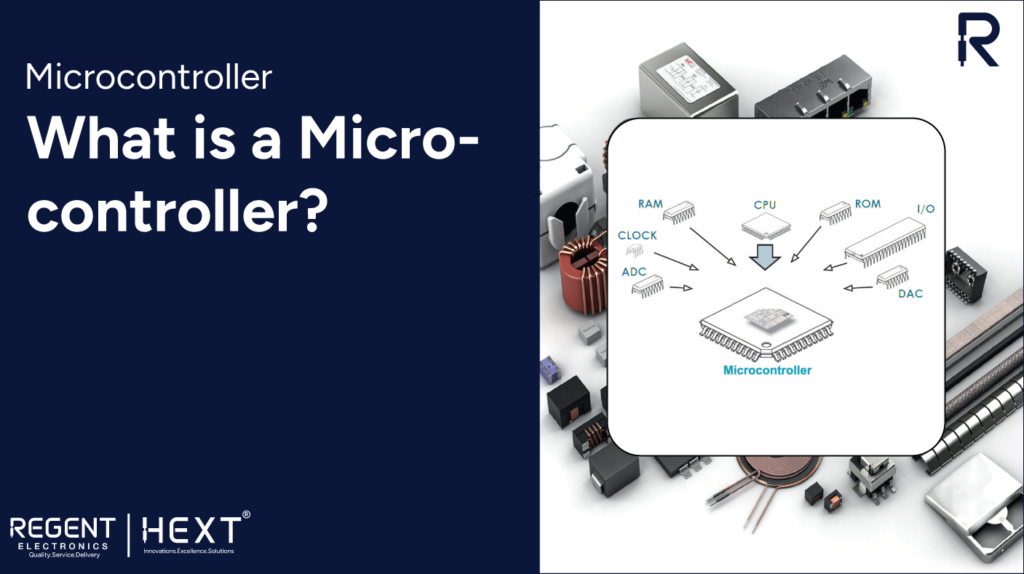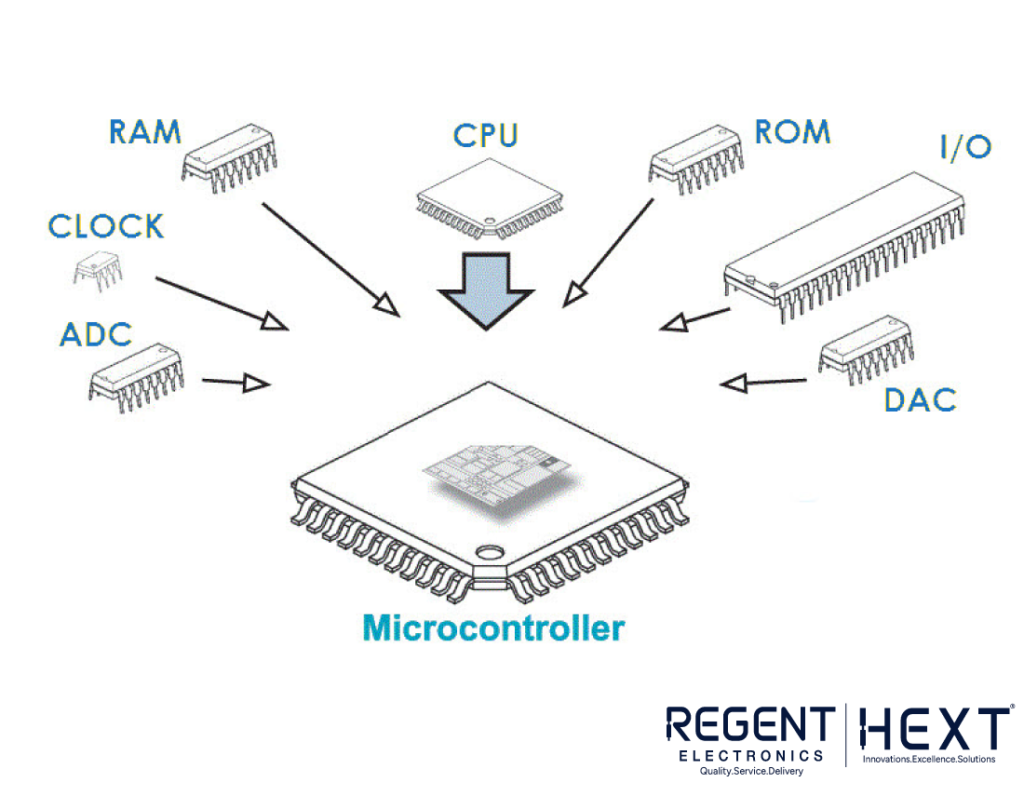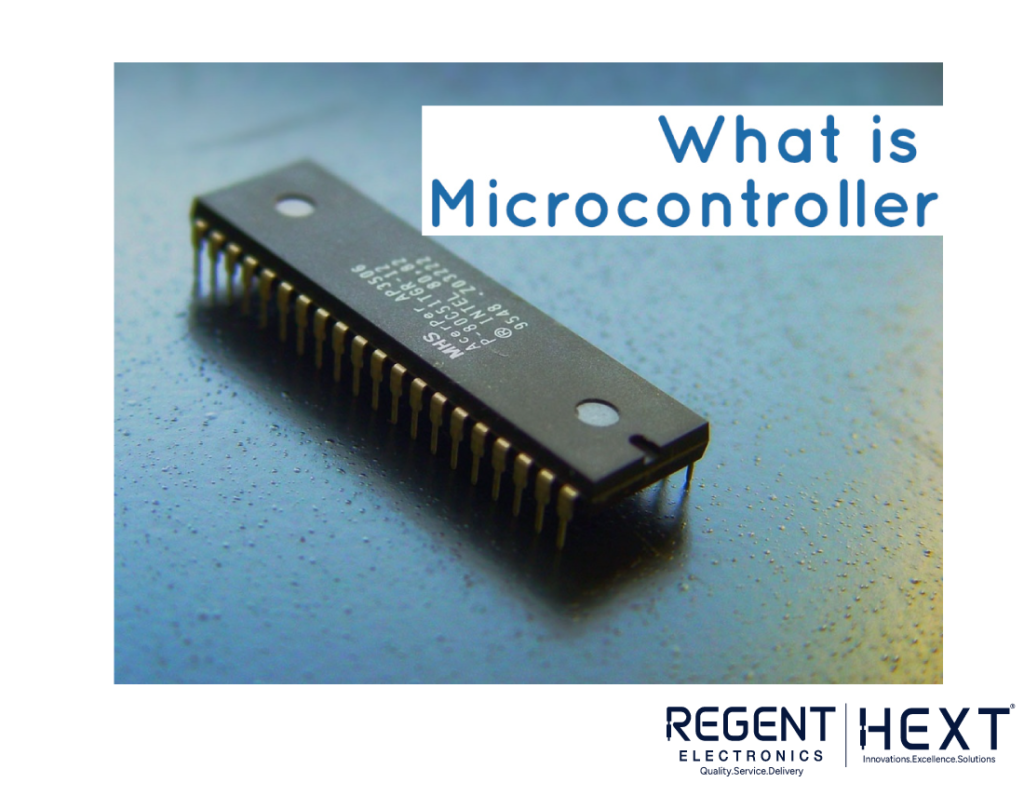
What is a Microcontroller?
Introduction

Microcontrollers are at the heart of modern technology, playing a vital role in various electronic applications. Whether in consumer electronics, industrial automation, medical devices, or even aerospace systems, microcontrollers serve as the core component that drives efficiency and automation. This article explores the fundamentals of microcontrollers, their internal architecture, and their significance in embedded systems.
What is a Microcontroller?

A microcontroller is an integrated circuit (IC) designed to control electronic systems by executing pre-programmed instructions. It combines a microprocessor unit (MPU), memory, and peripherals to facilitate seamless interaction with digital, analog, or electromechanical components. Microcontrollers are optimized for embedded applications that require efficient processing and real-time responsiveness.
The term “microcontroller” is often abbreviated as MCU (Microcontroller Unit) or µC (where the Greek letter mu replaces “micro”). These devices are widely used across various industries due to their affordability, versatility, and ease of programming.
Key Components of a Microcontroller

A microcontroller consists of the following essential elements:
1. Central Processing Unit (CPU)
The CPU is responsible for executing instructions, performing arithmetic operations, managing data flow, and generating control signals. Modern microcontrollers support high-level programming languages like C, simplifying the development process.
2. Memory
- Nonvolatile Memory (Flash Memory): Stores the microcontroller’s program, ensuring data retention even when power is lost.
- Volatile Memory (RAM): Used for temporary data storage during operation. Data is lost when the system is powered off.
- Registers: Provide immediate access to temporary data for efficient processing.
3. Peripherals
Microcontrollers interact with external devices through peripherals, categorized as follows:
- Data Converters: Analog-to-Digital Converter (ADC), Digital-to-Analog Converter (DAC), and reference voltage generators.
- Clock Generation: Internal oscillators, crystal-driven circuits, and phase-locked loops for precise timing.
- Timing Modules: General-purpose timers, real-time clocks, external event counters, and Pulse-Width Modulation (PWM) controllers.
- Analog Signal Processing: Operational amplifiers and analog comparators for signal conditioning.
- Input/Output Interfaces: General-purpose digital I/O circuitry and parallel memory interfaces.
- Serial Communication Protocols: UART, SPI, I2C, and USB for efficient data transfer.
Applications of Microcontrollers
Microcontrollers have widespread applications across industries:
- Consumer Electronics: Smart appliances, wearables, and home automation systems.
- Industrial Automation: Programmable Logic Controllers (PLCs), robotics, and smart sensors.
- Automotive Systems: Engine control units (ECUs), airbag systems, and infotainment.
- Medical Devices: Pacemakers, glucose monitors, and diagnostic equipment.
- Aerospace & Defense: Navigation systems, drones, and communication modules.
Why Choose Microcontrollers?
Microcontrollers offer several advantages, including:
- Cost-Effectiveness: Affordable solutions for complex embedded applications.
- Compact Size: Ideal for space-constrained designs.
- Energy Efficiency: Low power consumption for battery-powered devices.
- Versatility: Wide compatibility with various communication protocols and sensors.
- User-Friendly Programming: Supported by extensive development environments and libraries.
Conclusion
Microcontrollers are indispensable in modern electronics, providing control, automation, and intelligence to a wide range of applications. Their integration with memory and peripherals makes them an ideal choice for embedded system designers. Whether you are a hobbyist, student, or professional engineer, mastering microcontroller-based circuit design can open doors to innovation and technological advancements.
What are your thoughts on microcontrollers? Share your insights in the comment section!
